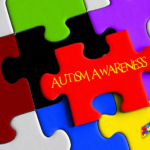
19 Sep 5 things the kids are likely to bring home from daycare…
Childcare and Common Illnesses: What Parents Need to Know
When your child starts attending childcare, it’s common to encounter a range of illnesses. From respiratory infections to skin conditions, these illnesses spread quickly among children, who are often in close contact with one another. While it’s almost inevitable, understanding the common ailments and knowing how to manage them can ease the burden.
Here’s a quick guide to help you navigate through some of the most frequent illnesses your child might face at childcare.
#1. Respiratory Illnesses
One of the most common issues in childcare is respiratory infections, which can be caused by viruses or bacteria. They spread quickly through coughing, sneezing, and runny noses. Infections can affect the upper respiratory tract (throat, tonsils, or ears) or lower respiratory tract (lungs or windpipe), with common conditions including colds, influenza, bronchitis, and pneumonia.
How to manage:
- Provide rest and plenty of fluids.
- Monitor your child’s symptoms, especially for fever.
- Viral infections won’t need antibiotics, but bacterial ones, like tonsillitis, might. Always consult your doctor.
#2. Gastroenteritis (Gastro)
Gastro, an infection of the digestive tract, is highly contagious and can spread easily in childcare settings. It’s often caused by viruses but may also result from bacteria or parasites. Symptoms include vomiting, diarrhea, stomach pain, and fever.
How to manage:
- Keep your child hydrated with small sips of water or breast milk.
- Good hand hygiene is crucial to prevent the illness from spreading within the family.
- Keep your child home until they fully recover to avoid spreading it to others.
#3. Skin Infections and Rashes
Rashes are quite common in young children, often due to viral infections, and can range from mild to contagious. Some common skin conditions include:
–Slapped Cheek Syndrome (or Parvovirus B19): This infection, recognised by a bright red rash on the cheeks, is common in children and is contagious before the rash appears. Once the rash shows, it is no longer infectious.
-Hand, Foot, and Mouth Disease: This virus causes blisters on the hands, feet, and inside the mouth. It spreads through saliva and direct contact with the blisters, so it’s important to keep your child home until the blisters dry.
-Impetigo (School Sores): A bacterial skin infection that causes small, crusting blisters, impetigo is highly contagious. It’s important to consult your doctor for potential antibiotic treatment and keep your child home until the sores have healed.
How to manage:
- Allow your child to rest and keep them hydrated.
- The best approach for viral infections is monitoring symptoms. Treatment for bacterial infections like impetigo may include antibiotics.
- Always practice good hygiene to minimize the spread.
#4. Worms (Threadworms/Pinworms)
Threadworms are tiny worms that live in the intestines and are commonly spread in childcare settings. They are passed from person to person through microscopic eggs, which children often pick up through scratching or poor handwashing habits. Symptoms include itching around the bottom, disturbed sleep, and loss of appetite.
How to manage:
- Treat the whole family with a single dose of worm treatment.
- Encourage proper handwashing, especially after using the toilet.
#5. Head Lice
Head lice are a frequent nuisance in childcare and schools, spreading through head-to-head contact. Though they don’t cause illness, they lead to itching and discomfort. Most childcare centres have policies in place to notify parents so treatment can be done promptly.
How to manage:
- Use the “conditioner and comb” method or a chemical treatment from the pharmacy.
- Follow instructions carefully and check for lice regularly to prevent re-infestation.
Final Thoughts for Parents and carers
While it’s impossible to avoid every illness in childcare, good hygiene, prompt treatment, and keeping your child home when sick can greatly reduce the spread of infections. By understanding the symptoms and knowing how to manage these common conditions, you’ll help keep your child and others as healthy as possible.
**If in doubt, always consult your doctor for medical advice specific to your child’s condition.**




